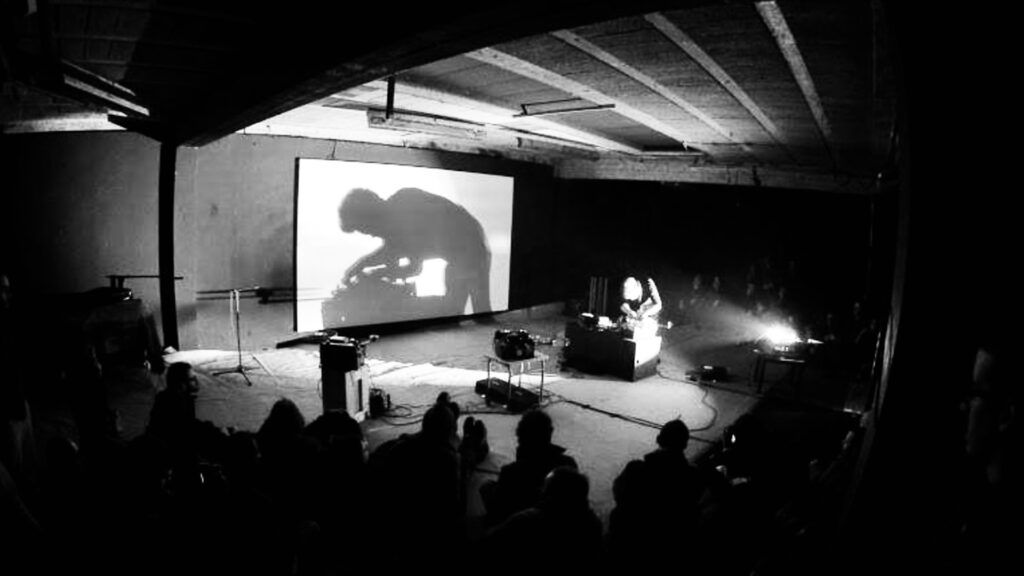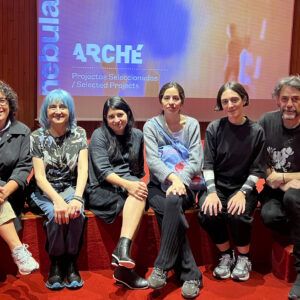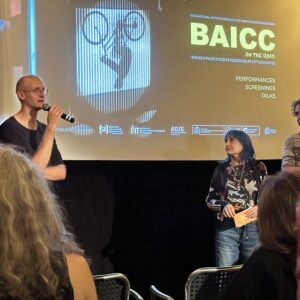
Experimental Film in Korea
Except in Japan, in all the Asian countries is kind of the same: We don’t have a proper education, we don’t really have a proper archive or other infrastructure to understand experimental cinema. I attended a film workshop only for narrative cinema in 1996 or 97, before I joined the military service. So I just started to understand the film language. Back then we used Arri cameras and all that stuff to make narrative cinema, which is really difficult and cost a lot. During my military service, in 1999, I once took a vacation for about a week. Walking around Seoul, I saw the poster of the Black Maria Film Festival. There was some guy who studied experimental film in the States, he was studying at Syracuse and somehow this guy got some connection with the Black Maria Film Festival in the States and he brought an experimental program, and all the screening programs were free. So I saw all that stuff, some Brakhage, and Kenneth Anger, and then there were a few Koreans studying experimental filmmaking in the Chicago Art Institute and in California, something like that. I was really surprised to understand that this was a cinema I could make by myself without any help. So that was how I began to understand experimental film.
Beginnings
I studied sociology and communication theory. So I did not study cinema but I met two guys in a workshop, they were studying experimental filmmaking at the Chicago Art Institute. They understood everything from hand processing to optical printing, contact printing, etc. So around 2006 they wanted to start a festival and they wanted to organize a workshop. So I joined them. Back then I was working more in writing about cinema but I suddenly thought that maybe I can make something myself. Then I met some guy who was into improvised music. The improvised music community also started around that time, early 2000s to mid 2000s, there were a bunch of people getting interested in things, and making experimental music, experimental theater, experimental cinema, etc, so it was easy to find this kind of strange people in Seoul.
Phantom Schoolgirl Army
The Phantom Schoolgirl Army was a title of a newspaper around the 1980s, a fake history about what really happened by the dictatorship back then, the government was trying to invent a story. Let’s say we had a complex, there was really a lot of trouble with communism in the history of Korean society. From 1950, after the Korean War, to 1970, even until the 1980s, there were lots of political conflicts, so the government tried to use these conflicts to control the society.
The Historical Background of The Performance
It’s about a very small city in South Korea called Suncheon. There was a small group of student protests, and the government considered them communists. So those small protests ended up being really big. So the government sent the army and they killed lots of people, thousands of people died. Then some of those people moved to Jeju and there was the Jeju uprising so the government also killed more than 20,000 people on Jeju Island. It’s really a crazy story. So it’s all about communism and political representation. And then, around 2012 or 13, I attended an artist residency in Suncheon so I did research about the historical background and also about the medium, photography and cinema and everything, and how history is represented through the medium. I discovered a photography studio in Suncheon, there was a really old guy that had a photography studio from 1950 to around 2015. So I went there to take a look at his personal archive, he keeps a lot of portraits. I did an interview with him and I investigated a lot of history about the photographs and there are so many things. On this day we use Photoshop, but back then when they took a portrait of people and there’s something missing they drew on the photograph with a pencil making a black or making white or something like that. So those kinds of things are really what I investigated and were behind the portrait photography. I just tried to develop that idea of photography into a cinematic medium. So I developed it as a performance using the strobo lights
Film Walk
I think at the beginning of my career as a filmmaker, I saw a lot of really amazing works and I thought, okay, I couldn’t be a good filmmaker, impossible. So I tried something different. I really liked music, even when I was young, so around 2005 to 2009 I had a really big studio, just like a really big darkroom. So I just kept studying about the chemical, the photochemical, for about two years by myself and I tested lots of strange things and techniques. And then I began thinking about what is the position of the filmmaker at the cinema space. There’s no space for the filmmaker. I mean, when they finish their work, there are some screenings, of course, after the screening there’s a Q&A session with the audience, but that’s it. So I really wanted to position myself as a filmmaker at the cinema space. That’s the idea about the so-called expanded cinema for myself. So I started to make some sort of improvisations with my friends, they’re all musicians. At the beginning I was making some expanded cinema stuff like multiple projection with some kind of music. I don’t really like that anymore. Anyway, that was my beginning at expanded cinema. And then around 2005 or 6 there was a film lab meeting in Belgium and there were lots of film performances. I met people from Grenoble like Metamkine and a lot of performance groups in France. So I thought maybe I can try that kind of thing. After that I regularly visited Grenoble and other cities in France and I could work with them, see them, understand their historical background, and so on. So I slowly developed my idea of the filmmaker as a musician. The idea of Film Walk comes from all those strange crazy ideas from the musicians. One of my friends, a Korean musician, was using a typewriter. He connected all those strange motors with a typewriter: if you typewrite something, the typewriter just can make sound. Every performance he wrote something, he really doesn’t care about anything but the sound. He just kept writing. So after the performance, there’s one paper, so that one paper really connects with that performance in a way. I really like that idea. I want to try to do something like that, not always presenting the same performance over and over again. So I just wanted to try to understand how the space and the audience and the light and all those specific conditions change the performance every time, so that was the idea behind how I can develop that. Also the film projector is very interesting for making sound. There are lots of different forms for making sound, for which you use the projector not in the way you would use it for a normal projection, you are not supposed to do that, but I do it in my performance. So I’m making all those strange sounds. Also I had been working as a projectionist for a long time for my festival, since we were trying to show analogue formats but there was no one who could do that. I understand the projection itself very well, so I just kept developing my idea while I was working as a projectionist, to perfectly represent the idea about projection and the projector itself. The set up of the performance really depends on the space. I don’t really have predetermined positioning of the projector and audience.
Experimental Cinema in Korea
Like I said, in Asia, except Japan, we don’t have anything like a history of experimental film. Of course there’s some little bit of history in Indonesia, and Singapore and of course in China, but this history really doesn’t represent something as a historical concept of the cinema. For example, in South Korea it is really, really complicated to understand the history of cinema. I mean of course the so-called national history of cinema, the national cinema it’s easy, but experimental cinema and documentaries are difficult to understand.
It’s a really long history, so I’m just giving one example. There is one filmmaker called Kim In Tae who worked for the national production company at the end of the 60s. He got a grant from the state. The grant, so-called the Syracuse contract, means that the state supports the Korean people to understand the film language. So a few people visited the States to learn how to edit, how to shoot, how to make some kinds of subtitles and optical printing. This filmmaker, after the education program in the States,visited the National Film Board of Canada, where he made a film with Norman McLaren, the title of the film was The Korean Alphabet. You can watch it at the National Film Board of Canada website. That was, I think, 1971, I think, this filmmaker made a film with Norman McLaren and Norman McLaren made the sound for him. And the technique is great, it’s amazing. But the problem is that when he came back to Korea, of course, we didn’t have proper equipment, proper infrastructure, proper education, so he became a TV producer at the broadcasting company and that’s it. And then he disappeared. There are many stories like this one from 1950 to the 1980s. So those historical facts do not really connect one pathway. So it’s really difficult to understand or to make a history of Korean experimental cinema.
The Experimental Film Scene in Korea
There is not really a scene. In the last 10 years, from all the amazing works I saw, maybe more than 70% of them are from the art people, not really from the film community. Film community is really shrinking in a way. On this day, of course, the worlds of film and fine art are really mixed up. So it’s kind of difficult to say. Experimental filmmaking is still happening? Or not?





